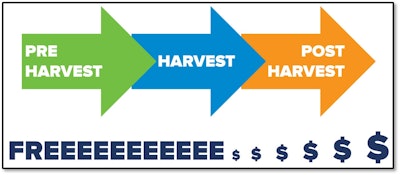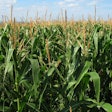
After the dust settles from a crop year and accounts are reconciled, a producer's main objective is to turn a profit. Along the way, there are several smaller objectives, such as improving soil composition, increasing yield, and making better sales. Ultimately, these micro goals serve the broader aim of financial success. As buyers of grain, what role do we play in helping producers achieve their goals? Should we focus solely on our own objectives, or engage in supporting the producers' decision-making process? For the future of grain buying, it’s crucial that producers remain profitable and stay in business. Therefore, it is reasonable to assert that we should actively assist them in making the best possible decisions.
When speaking with producers, I like to start by asking, “Have you ever sold the high?” If they have, they’ll eagerly share the story. However, my follow-up question—“What percentage of your crop did you sell at the high?”—usually doesn’t yield an answer in percentages. This is because the number of bushels sold is often so small that it’s inconsequential. The common response is something like, “I sold 500 bushels at the high.” To delve deeper, I ask why they didn’t sell more. Answers vary, but the most frequent response is, “I didn’t know it was the high, and I was afraid it might go higher.” If a producer’s sole marketing strategy is to “sell as high as possible,” they’re setting themselves up for a long—or rather, very short—career. This strategy is flawed because only in hindsight do we recognize the high, which occurs just once each marketing year. Relying on this approach makes for a poor strategy. So, what makes a good strategy?
Let’s identify three key pricing windows:
1. Pre-harvest window Futures contracts are available many months or even years in advance, allowing producers to secure a cash sale that guarantees a future delivery slot and locks in a cash price. This is an advantageous time to secure profitability without incurring additional fees. Although pre-harvest sales can carry some risk due to unknown yields, historical production data can guide producers to make informed decisions.
2. Harvest window By harvest, the uncertainty of crop size is largely resolved, giving producers a clear sense of their total production. However, prices often drop due to supply outpacing demand, as the bulk of the year’s grain floods the market. Despite the generally lower prices, making a cash sale during harvest avoids extra costs like storage or opportunity loss.
3. Post-harvest window Once the grain is stored post-harvest, prices often rise due to the continuing demand from feeders, ethanol production, etc. However, holding grain incurs rising costs, including storage fees and the cost of carry, whether it’s interest on operating lines or lost bank interest. Additionally, storage tends to shrink bushels due to conditioning requirements. If prices don’t improve, the producer could face significant losses, as seen in the most recent marketing year since the 2023 harvest.
Understanding these windows helps originators craft a more strategic approach, ultimately benefiting both producers and grain buyers.
Focusing on the pre-harvest window
Pre-harvest prices for both corn and soybeans often follow consistent seasonal patterns. By recognizing these trends, producers can strategically aim to maximize profits. Examining five-year (2019-2023), ten-year (2014-2023), and twenty-year (2004-2023) trends reveals remarkably consistent patterns. This predictability stems from market uncertainties that arise during crucial growing periods. From November before harvest through June before harvest, the market grapples with concerns over whether crops will mature as expected. White Commercial Corp.
White Commercial Corp.
Key challenges include:
- Acreage battles: Conversations about acreage and shifting crop rotations start before planting begins. This speculation can significantly affect the futures market.
- Planting delays: In certain years, planting delays extend into critical periods, raising doubts about whether crops will be planted on time or at all. Such uncertainty often sparks speculation about potential impacts on final yields.
- Adverse weather conditions: Even with timely planting, unpredictable weather (e.g., excessive rainfall or drought) can create significant volatility. This uncertainty shapes the market’s perception of potential yields.
The interplay of these unknowns drives pre-harvest price swings as the market reacts to emerging information. By understanding these seasonal trends, producers can make informed marketing decisions during this window.
By the end of June for corn and early to mid-July for soybeans, most U.S. corn has typically undergone pollination and soybeans are well-established. At this stage, the market has a clearer understanding of the planted acreage and a better sense of the potential yield. As indications suggest that a reasonable crop will be produced, the market rapidly adjusts, removing any speculative premiums previously embedded due to uncertainties that have since been resolved. White Commercial Corp.
White Commercial Corp.
As shown in the charts, once the market concludes that a crop will likely materialize, the price adjustments tend to be both rapid and dramatic. The opportunity to capitalize on this volatility closes abruptly, leaving people puzzled as to how prices that took months to reach can disappear so quickly. This sudden change underscores the importance of acting during these peaks, which have consistently demonstrated their reliability over the past two decades.
With this information in mind, what message should you convey to producers to yield positive results?
- Change the focus from price to profit: Instead of focusing solely on price, emphasize profit per bushel.
- Commit to planning: Establish production histories, calculate costs, and answer critical questions to build a comprehensive plan.
- Decide on reasonable profit: Set a clear profit goal to help prevent market volatility from disrupting marketing plans.
- Sell meaningful amounts: Match production with market objectives and make sales during these seasonal rallies, followed by larger sales after the crop is made and the rest at harvest. This method avoids risk and excess fees and costs.
- Expose yourself to the market: Utilize targets/offers to actively participate in the market around the clock, ensuring profit margins without needing to manually monitor the market.
- Understand crop insurance: Understand crop insurance and incorporate the particular policy into marketing plans to mitigate risk and safeguard revenue.
- Avoid the hecklers: Ignore distractions and myths that may lead to poor marketing decisions.
In conclusion, understanding seasonal trends in new crop corn and soybeans helps grain originators and producers develop more effective marketing strategies. Recognizing the three pricing windows—pre-harvest, harvest, and post-harvest—enables producers to strategically plan sales and minimize risks. Shifting the focus from price to profit, committing to thorough planning, and maintaining a steady course are essential steps for success. By following these principles, grain originators can empower producers to make informed decisions and reach their profitability goals.



















